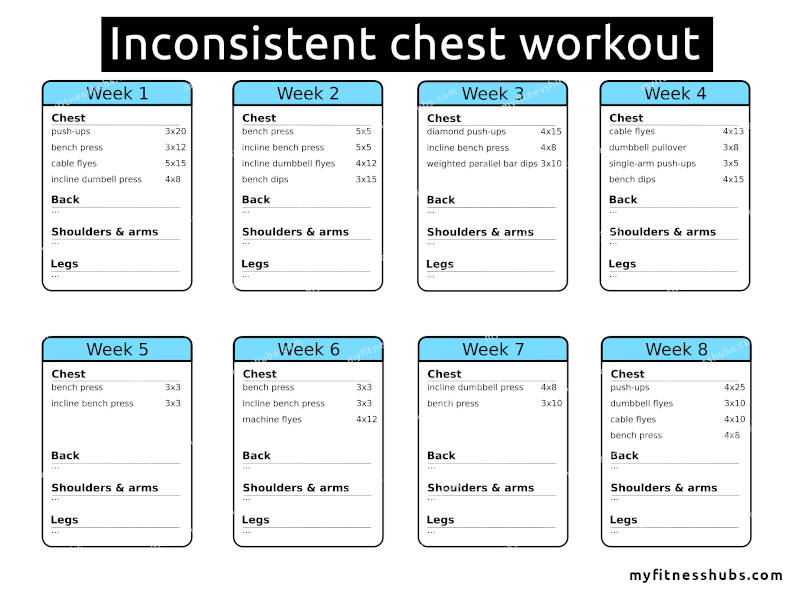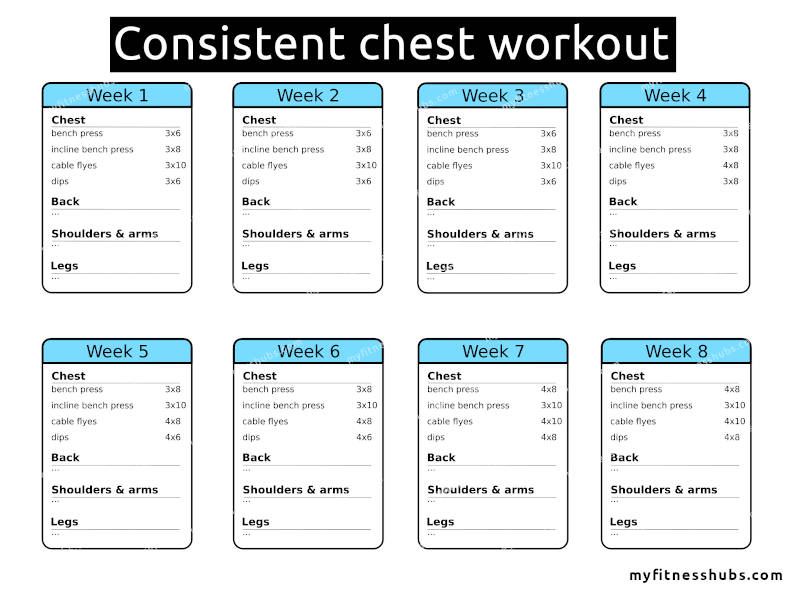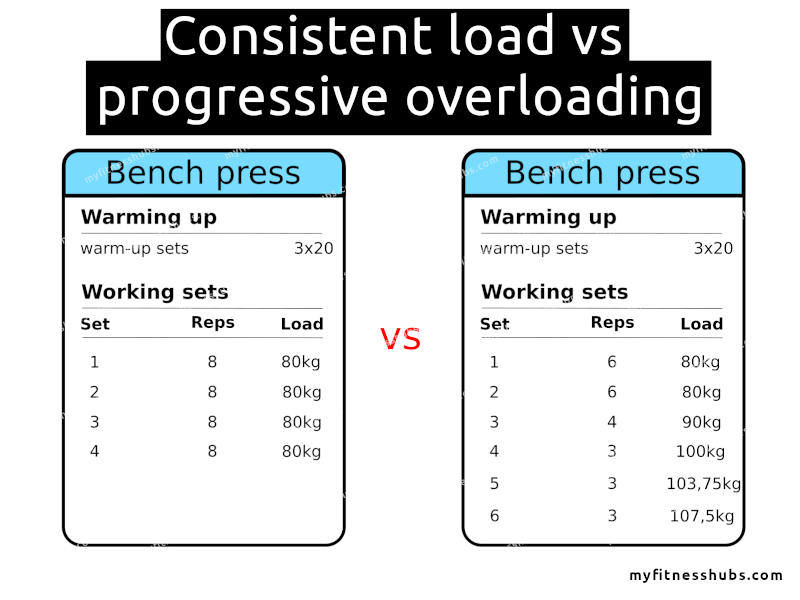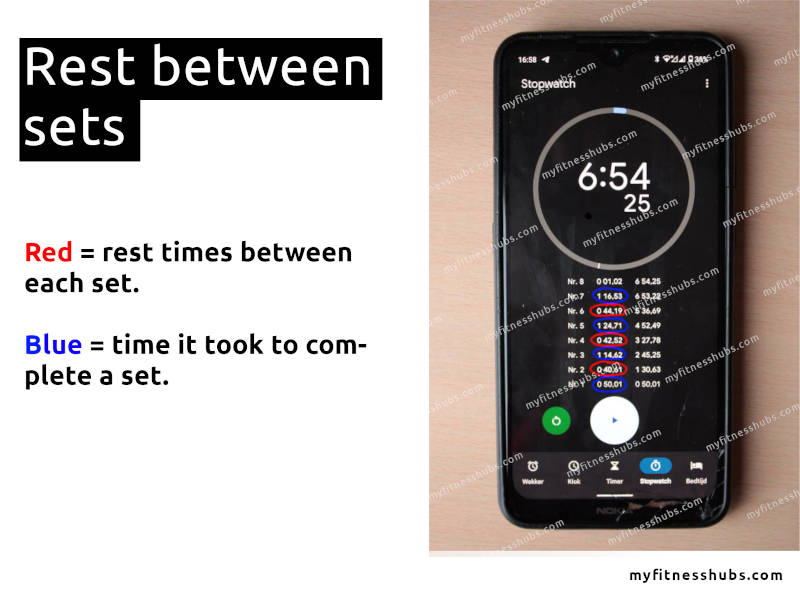I hope you enjoy reading this article.
If you have questions or would like a certain topic to be discussed, feel free to reach out to me.
Introduction
In a previous article, I argued why it's essential to track your gym progress if you're serious about your fitness journey.
If you still need to read that article, or you don't know why it's so important to know how much progress you're making, make sure to read that article first.
In this article, I'm going to take a deeper dive into tracking your gym progress. I'll zoom in on the essential aspects or parameters that you should track in your gym journal, which are related to your training and workouts (in an upcoming article, I'll focus more on parameters that are related to your physique).
At the end of this article, you'll know what parameters and variables you should track to make the most out of your gym journal.
With the parameters that I'll discuss in this article, you'll have all the data you need to assess whether you're making progress in your training or not, and this can help you to make practical adjustments to your training where it deems fit.
Let's get started!
What parameters should you track in your gym journal?
If you genuinely want to get the most out of your efforts and meticulously track your progress to efficiently achieve your fitness goals, then you will monitor several parameters.
We can distinguish the parameters you need to monitor into two groups:
- Parameters related to training.
- Parameters related to the physical characteristics of your body.
In this article, I'll discuss the parameters related to training, while the parameters associated with the physical characteristics of your body will be highlighted in a future article.
The parameters related to training can be further categorized into parameters related to strength training and parameters related to cardiovascular training; the parameters associated with the former will be discussed below, while parameters related to the latter will be included in this article in an update soon.
Parameters related to strength training
There are several parameters in strength training that you can track to analyze your progress. These parameters include:
- Which exercise(s) you do per muscle group.
- The number of sets per exercise.
- The number of repetitions per set of an exercise.
- The load per set of an exercise.
- The rest time between your sets.
To keep track of your training effectively, you want to be as consistent as possible in the exercises per muscle group you perform, the number of sets per exercise, the number of repetitions per set, and the load or weight per set of an exercise.
You also want to maintain the amount of rest you take between sets as consistently as possible. Let's see below how these parameters come together.
Exercises per muscle group
In almost all workouts that target specific muscle groups, there are often multiple exercises per muscle group that you need to perform. For any muscle group, there are lots of exercises you can choose from.
If you want to make progress in a particular exercise for a muscle group, it won't help if you literally do a different exercise every workout targeting the same muscle group (for example, chest).
Consider the following figure:

Now see how the previous figure starkly contrasts the following workout:

You want to consistently do the same exercises to be able to track how you're doing in that exercise, such as whether you're getting stronger and can lift more weight or not.
This means that your workout program should be a certain length of time long (for example, there are 4-week workout programs, 8-week workout programs, 3-month programs, 6-month programs, etc).
Ideally, you'd want to keep doing the same exercise for each muscle group for a period of about 3 months before switching exercises. That way, you'll get used to the biomechanics of each exercise, and you'll be able to closely monitor whether you're getting stronger, more muscle, and achieve better endurance. You won't be able to monitor that as well if you're having a very eclectic workout session each time you go to the gym.
Sets, reps, and load per set
An exercise is usually performed in multiple sets, with a certain number of repetitions done with a specific weight or load per set. After each set, there is then a period of rest before you perform the next set of the same exercise.
You can maintain the same load for all sets of an exercise or change the load between sets (*). For example, suppose you do 3 sets, but you start with 60% of your 1RM in the first set, followed by 70% in your second set and a weight of 80% in your last set.

Again, what holds for consistency in the type of exercises you do, also holds for consistency in the number of sets, reps, and load per set you do. Being consistent in these parameters allows your body to adapt to the load and stress it’s enduring, resulting in stronger and bigger muscles, and thus, breaking your own personal records in specific exercises as you progress.
*: Note: this form of training, where you're increasing the load in between sets, is not recommended for beginners, and it is wise to perform all sets of an exercise at the same weight and the same number of repetitions per set.
Rest between sets
When you're doing your sets, you need to take a rest period between each set. This rest period can be short or as long as a few minutes, depending on the type of training you're doing.
With hypertrophy training (the most popular type of weight training in the gym), people usually take 30 to 60 seconds of rest between their sets.
What's important, though, is that you try to keep your rest time between your sets as consistent as possible.

Obviously, the longer your rest time is, the easier it will be for you to perform the subsequent set. Similarly, the shorter the rest time, the faster fatigue occurs.
If you use a different rest period each time, it is more difficult to determine whether you are getting stronger or not. And that's because if you take more rest, fatigue occurs less quickly, while if you take shorter breaks between your sets, you will have more difficulty performing the last reps of the next set.
You will then wonder why you couldn't do the last 3 reps of your final set of an exercise, while in the previous workout, you could perform all sets of the same exercise easily. That's because your rest time during this training was much shorter than the last time.
So basically, the less variability occurs in your rest periods between sets, the more easily it'll be to check whether you're making progress in getting stronger over time.
Conclusion
As you can see, multiple progress parameters are related to your training alone, which you can track in your gym journal.
If you have a personal trainer, then you can safely assume (if your trainer is a good personal trainer!) that he/she logs and tracks these parameters for you, and adjusts your program whenever necessary.
My advice though, is that whether you have a personal trainer or not, it’s always best if you track these parameters by yourself too.
My biggest takeaway is that you should never track just one aspect or parameter. Because the more you track, the more data you'll have. And the more data you have, the better the insights you'll get into your progress and gym journey.
Always track as much as you can!
This makes it possible to make fine adjustments to your training, for example, if you've hit a plateau and you're trying to break through that plateau.
Another benefit of tracking lots of parameters is that the more progress you see in multiple parameters, the bigger the boost of motivation you’ll get from the results: all the hard work has paid off finally!
Seeing these results with your own eyes will keep working out exciting for you, so in a way, tracking your progress is a great example to reduce the risk of getting bored from working out.
What aspects or parameters do you track in your gym journal, and what kind of (strength) training do you do? Let me know in the comments below!
Do you want to
get fit?
At Fitness Hubs I've made it my mission to help you lose weight, get fit, and become the best version of yourself!
On this page
Share
Author
During the day I work as a healthcare professional in dentistry, but in the evenings and weekends you can find me in the gym or doing some cardio training outside. Besides having a passion for exercising, I like to write about anything related to fitness, nutrition, motivation, weight loss, and achieving a healthy lifestyle in general.
Comments
